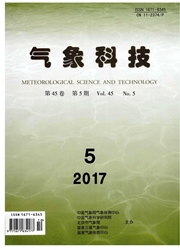

 中文摘要:
中文摘要:
利用1951—2007年NCEP/NCAR逐月再分析资料和NOAA扩展重建海表温度ERSST.v3b数据,通过分析春季地气温差和大气热源显著性分布及变化特征,选定了东亚(以青藏高原为主)区域为研究对象,运用标准化指数计算、异常年合成,相关性比较等方法,分析并探讨了影响高原春季热源的前期冬季海温特征及时空分布关系。分析发现在冬季北太平洋海面存在着两个海温与春季高原视热源相关性较显著的区域,位于北太平洋东部海域A区及位于北太平洋西部海域B区,前者呈正相关关系,后者呈反相关关系。以3月高原热源为出发点,进一步分析了前期海温场对青藏高原视热源影响"强信号"区持续性,以印证冬季海温对春季视热源影响具有持续性的前兆性意义。通过异常年分析,揭示出对应于前期冬季海温强信号区异常年的高原大气视热源与风场垂直结构异常特征;通过前冬海温强信号区与夏季东亚相关环流型和水汽输送结构的相关矢综合分析,进一步揭示出夏季长江中下游多雨年的前冬海温强信号区域与后期夏季500hPa高度场相关型及其整层水汽输送相关矢特征。
 英文摘要:
英文摘要:
The relationship between Tibet (SST) in the prior winter is analyzed and plateau heat sources in early spring and sea surface temperature explored, based on the data of NCEP/NCAR monthly reanalysis from 1951 to 2007, and NOAA' s extended reconstruction SST data (ERSST. v3b). The methods used include standardized index, abnormal year synthesis, and statistical analysis. The results show that there are two areas in the North Pacific Ocean, in which SST in previous winter has remarkable correlation with the heat sources on the plateau in early spring: Region A located in the Eastern North Pacific with the positive relation, and Region B located in the Western North Pacific with negative relation. Meanwhile, the persistent correlation between SST in previous winter and heat sources in the plateau in March is analyzed; it was found that the method using the variation of SST in the prior winter in both Region A and B has shown some skill in predicting Tibet plateau heat sources in spring. The abnormal synthesis reveals that the abnormal characteristics of atmospheric heat sources and the vertical structure of the wind fields correspond to the abnormal years of previous-winter sea temperature in strong signal areas. The further study indicates that the characteristics of the late summer 500 hPa height field pattern and its water vapor transport vectors are related with previous winter SST in Yangtze rainy years.
 同期刊论文项目
同期刊论文项目
 同项目期刊论文
同项目期刊论文
 期刊信息
期刊信息
